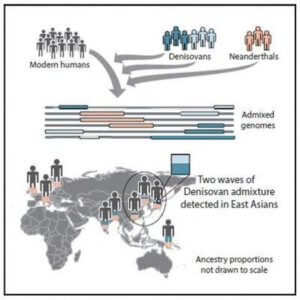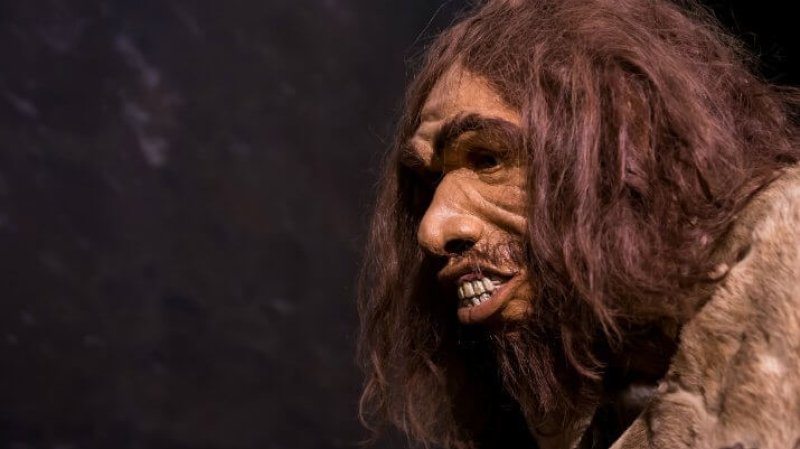We rarely portray Neanderthals, our close relatives, as telegenic…But to mock Neanderthals is to mock ourselves: Homo sapiens had lots of sex with Homo neanderthalensis. Neanderthal genes supply between 1 percent and 4 percent of the genome in people from homelands on several continents…

DNA from another human-like primate, the Denisovans, lurks in modern genomes, too. A molar and a chip of pinkie bone found in a Siberian cave provide what little information we have about this species…Yet a new study in the journal Cell shows the ancient hanky-panky did not stop in Siberia: Humans who traveled across South Asia mated with a separate group of Denisovans, as well.
…
Humans and Neanderthals divided into separate groups as far back as 765,000 years ago. Denisovans and Neanderthals were closer cousins who split more recently and then vanished — perhaps because we absorbed their lineages…
In the new study, [University of Washington biostatistician Sharon R.] Browning and her colleagues examined more than 5,500 genomes of modern humans from Europe, Asia and Oceania, looking for any possible archaic DNA.
…
The surprise was a third cluster — not like the Neanderthal DNA and only partially resembling the Altai Denisovans. This, the authors concluded, was a second and separate pulse of Denisovan genes into the DNA blender.
“The geography is quite suggestive,” Browning said. The authors hypothesize that, as ancestral humans migrated eastward, they came across two different Denisovan populations.
Read full, original post: Humans bred with this mysterious species more than once, new study shows































